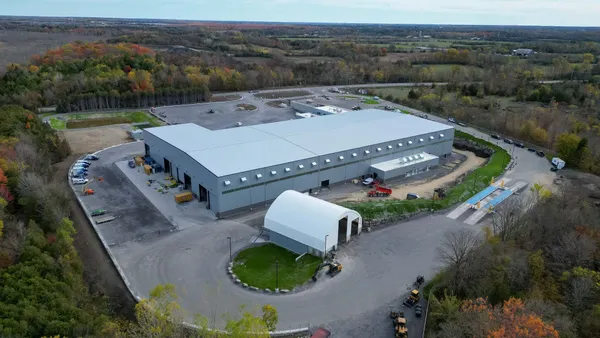Dive Brief:
- The recycling rate for PET containers saw a slight decline for the second year in a row, from 30.1% in 2015 to 28.4% in 2016, according to a new report from the National Association for PET Container Resources (NAPCOR) and The Association of Plastic Recyclers (APR). This was coupled with a 3% increase in the amount of PET available for recycling in the U.S., to 6.172 million pounds.
- The main factors for this volume growth were an ongoing rise in bottled water sales, an increase in the amount of PET used in other products and low prices for virgin PET resin. Decreasing sales of soft drinks, seen as a predominant category in container redemption programs, was a primary factor in the lower collection rate. Overall, collection volumes were down by 2.4% due to lower participation in curbside programs and container redemption systems — with the exception of California.
- Reduced demand among reclaimers was also described as a reason for lower collection volumes. According to the report, many reclaimers said that "2016 was one of the most challenging years — in terms of processing, operations and margins — since the birth of the industry in the 1980s." While some markets in the U.S. and Canada showed growth, the percentage of collected material that got exported was at its lowest level since 2000.
Dive Insight:
Now in its 22nd year — and 12th year of publication with APR — the NAPCOR report is a reliable benchmark for trends in the PET world. This sector has seen plenty of shifts in recent years due to changes in virgin resin prices, consumer habits and packaging design. While both NAPCOR and APR praised the strength of domestic PET markets in a joint press release, they also recognized the various challenges.
PET exports to markets outside North America continued to decline for the sixth year, giving further inspiration to those in the industry that see more opportunities for domestic processing. The volume of recycled PET used in North American end markets was up 5% from 2015 and multiple product sectors all saw growth. Yet during 2016, the U.S. lost eight of its PET reclamation plants and only gained one. None have reopened since, resulting in a net of 21 plants left operating with a decreased collective capacity. Factors varied in each case, but tight margins were a common issue as prices for virgin resin stayed low. According to the report, this made it harder to deal with contamination from various labels, colors and other additives that are favored by product designers but can cause headaches for reclaimers.
With the amount of PET bottles projected to grow 6% by 2020 it is seen as even more important to figure out how to maximize collection, while also ensuring more communication with designers so that material is ready to be recycled. As interest in domestic processing increases, and the recent trends of ligthweighting and single-serve packaging begin to level off, this may present a new opportunity to enhance diversion of a material that holds a key position in the recycling system.










